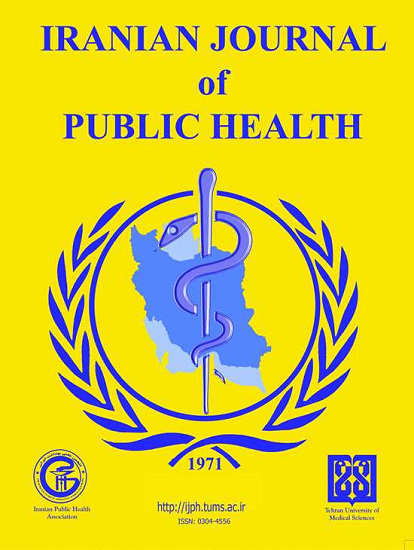Assessing Discharge Readiness and Factors in Peripherally Inserted Central Catheter Carriers with Malignant Tumors: A Meta-Analysis
Abstract
Background: The aim of this meta-analysis was to assess the readiness for discharge of patients with malignancy when carrying a peripherally inserted central catheter (PICC) as well as to explore the associated factors affecting readiness for discharge.
Methods: PubMed, EMBASE, Web of Science, CNKI, WanFang and VIP databases from inception to Mar 2024 were systematically searched to collect relevant cross-sectional studies. Fixed-effects and random-effects models were used for effect size synthesis, and the stability of the results was assessed by heterogeneity testing, sensitivity analysis, and publication bias detection.
Results: Eight cross-sectional studies comprising 748 participants were included, and the mean score for patients' readiness to discharge was 146.98 (95% CI: 127.17, 166.79) under a random-effects model, but the analysis showed a very high degree of heterogeneity (I²=100%, P<0.01). In our in-depth analysis of factors influencing discharge readiness, we found that literacy level (OR=1.30, 95% CI: 1.07, 1.59) and income level (OR=1.77, 95% CI: 1.13, 2.78) were significantly associated with better readiness for discharge, and that age had a non-significant effect on readiness for discharge, with a combined effect size (OR = 1.03, 95% CI: 0.97, 1.08).
Conclusion: Among patients with malignant tumours, self-efficacy, distance from home to the hospital, and income level have a significant impact on discharge readiness in their PICC carriers. Optimising discharge instructions and patient education strategies for these factors may improve patients' readiness for discharge, reduce the risk of PICC-related complications, and improve outcomes.
2. Le L, Yu L, Guan C, et al (2018). Epidemiology, Etiology, Screening, Psychotherapy of Malignant Tumor Patients with Secondary Depressive Disorder. Curr Pharm Des, 24(22): 2591-2596.
3. He K, Wan Y, Xian S (2018). Risk analysis on infection caused by peripherally inserted central catheter for bone tumor patients. J Cancer Res Ther, 14(1): 90-93.
4. Li Y, Yan B, He S (2023). Advances and challenges in the treatment of lung cancer. Biomed Pharmacother, 169:115891.
5. Sarin H (2009). Recent progress towards development of effective systemic chemotherapy for the treatment of malignant brain tumors. J Transl Med, 7:77.
6. Wang M, He M, Zhang M, et al (2023). Controllable hypoxia-activated chemotherapy as a dual enhancer for synergistic cancer photodynamic immunotherapy. Biomaterials, 301:122257.
7. Wang P, Soh K L, Ying Y, et al (2022). Risk of VTE associated with PORTs and PICCs in cancer patients: A systematic review and meta-analysis. Thromb Res, 213:34-42.
8. Mielke D, Wittig A, Teichgräber U (2020). Peripherally inserted central venous catheter (PICC) in outpatient and inpatient oncological treatment. Support Care Cancer, 28(10): 4753-4760.
9. Liu R, Xu H, Pu L, et al (2023). Clinical characteristics of peripherally inserted central catheter-related complications in cancer patients undergoing chemotherapy: a prospective and observational study. BMC Cancer, 23(1): 894.
10. Wang Y, Li J, Wang Y, et al (2021). The influential factors and intervention strategies that engage malignant cancer patients in health-promoting behaviors during PICC line maintenance. Am J Transl Res, 13(5): 5208-5215.
11. Ma S, Shen C, Li Q, et al (2023). Clinical factors of PICC-RVT in cancer patients: a meta-analysis. Support Care Cancer, 31(7): 393.
12. Shi G N, Jiang Z L, Gao X Q (2019). Analysis of discharge readiness of PICC carriers with gynaecological malignancies and its influencing factors. Journal of Guangxi Medical University, 36(7): 1210-1214.
13. Li N, Shao Z G, Chen X X (2018). Analysis of the current status of PICC self-management ability of oncology patients and its influencing factors. China Practical Medical, 13(6): 93-94.
14. Tao F, Wang X, Liu J, et al (2019). Perioperative application of midline catheter and PICC in Patients with gastrointestinal tumors. J BUON, 24(6): 2546-2552.
15. Tang Y M, Li H Q, Gao L L (2015). Investigation and analysis of the current status of PICC self-management behaviour of oncology patients and its influencing factors. Modern Clinical Nursing, 14(2): 17-20.
16. Zeng L (2018). Analysis of self-care ability and influencing factors during PICC for oncology chemotherapy patients. Journal of Qilu Nursing, 24(11): 4.
17. Li Y M, Meng N, Xiang Qiufen, et al (2017). Survey on the current status of discharge readiness and analysis of influencing factors in lung cancer PICC patients with tubes. Chongqing Medicine, 46(24): 3448-3450.
18. Wang X L (2018). Analysis of self-management ability and its influencing factors in the initial period of PICC indwelling in gastrointestinal tumour patients. The Journal of Medical Theory and Practice, 31(15): 2341-2343.
19. Zhang C C, Zhu Y X, Yin X X, et al (2022). Clinical significance of intracavitary electrocardiographic localization in the prevention of PICC heterotopia in children with tumor. Ann Noninvasive Electrocardiol, 27(4): e12934.
20. Yuen H L A, Zhao J, Tran H, et al (2022). Development of a risk score to predict peripherally inserted central catheter thrombosis in active cancer. Intern Med J, 52(10): 1733-1740.
21. Zhuang Y Z (2022). Analysis of RHDS scores and influencing factors in 176 postoperative cervical cancer patients treated with PICC catheterisation chemotherapy. Chinese and Foreign Medical Research, 20(21): 169-172.
22. Innis J, Barnsley J, Berta W, et al (2017). Development of Indicators to Measure Health Literate Discharge Practices. J Nurs Care Qual, 32(2): 157-163.
23. Yao X Y, Wang Y, Liu Z J, et al (2022). Influencing factors of resource utilisation in haemodialysis patients-Based on socioecological pyramid model. J Clin Nurs, 31(5-6): 770-780.
| Files | ||
| Issue | Vol 54 No 5 (2025) | |
| Section | Original Article(s) | |
| DOI | https://doi.org/10.18502/ijph.v54i5.18630 | |
| Keywords | ||
| Peripherally inserted central catheter (PICC) Malignancy Readiness for discharge Influencing factors Meta-analysis | ||
| Rights and permissions | |

|
This work is licensed under a Creative Commons Attribution-NonCommercial 4.0 International License. |





